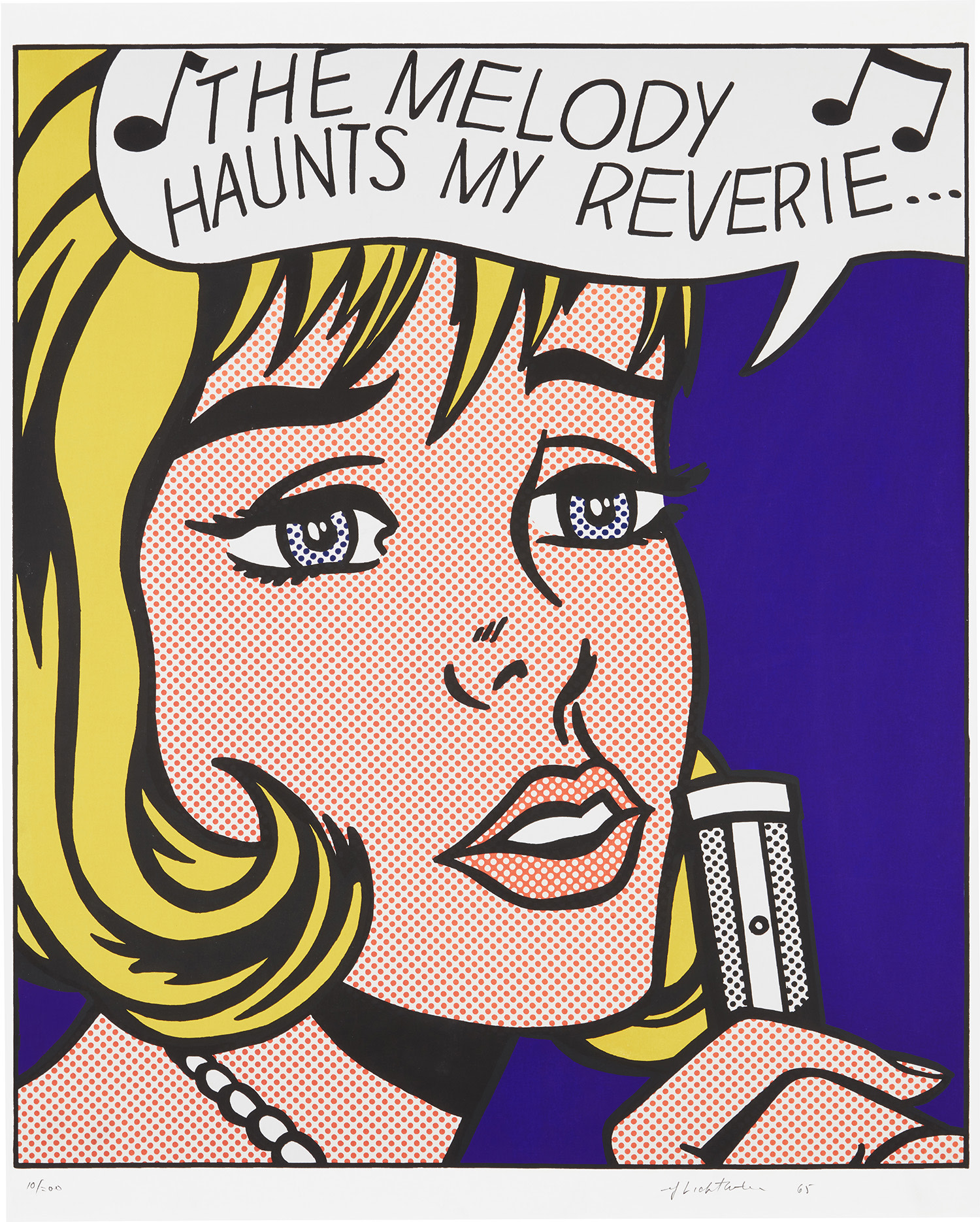

51
Roy Lichtenstein
Reverie, from 11 Pop Artists, Volume II (C. 38)
1965
Screenprint in colors, on smooth wove paper, with full margins.
I. 27 1/8 x 23 in. (68.9 x 58.4 cm)
S. 30 x 24 in. (76.2 x 61 cm)
S. 30 x 24 in. (76.2 x 61 cm)
Signed and numbered 10/200 in pencil (there were also 50 copies in Roman numerals and approximately 5 artist's proofs), with the 'Sammlung Lauffs' inkstamp and annotated 'L 51/1968' in pencil on the reverse, published by Original Editions, New York, framed.